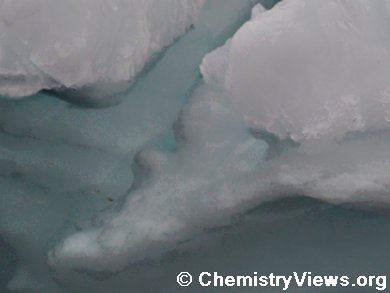Phosphorus is an essential nutrient for living organisms. In nature it is often present as PO43−. Therefore, detection of PO43− in ice cores is an important tracer for biological activity in the past.
Helle Astrid Kjær, University of Copenhagen, Denmark, and colleagues have developed a continuous and highly sensitive absorption method for detection of dissolved reactive phosphorus (DRP; PO43−) in ice cores. After filtering, the reactive phosphorus reacts with molybdate. Absorption at 710 nm is measured in a 2-m liquid waveguide capillary cell (LWCC).
The method has been applied to segments of a shallow firn core from the Northeast Greenland Ice Stream (NEGIS, 75.38° N, 35.56° W). A mean concentration level of 2.74 nM (0.26 ppb) PO43− for the period 1930−2005 with a standard deviation of 1.37 nM (0.13 ppb) PO43− and values reaching as high as 10.52 nM (1 ppb) PO43− were found. Similar levels were detected for the period 1771−1823.
Dust and biogenic particles are seen as the most likely sources of DRP deposited in Northeast Greenland.
- Continuous Flow Analysis Method for Determination of Dissolved Reactive Phosphorus in Ice Cores,
Helle Astrid Kjær, Paul Vallelonga, Anders Svensson, Magnus Elleskov L. Kristensen, Catalin Tibuleac, Matthias Bigler,
Environ. Sci. Technol. 2013.
DOI: 10.1021/es402274z



